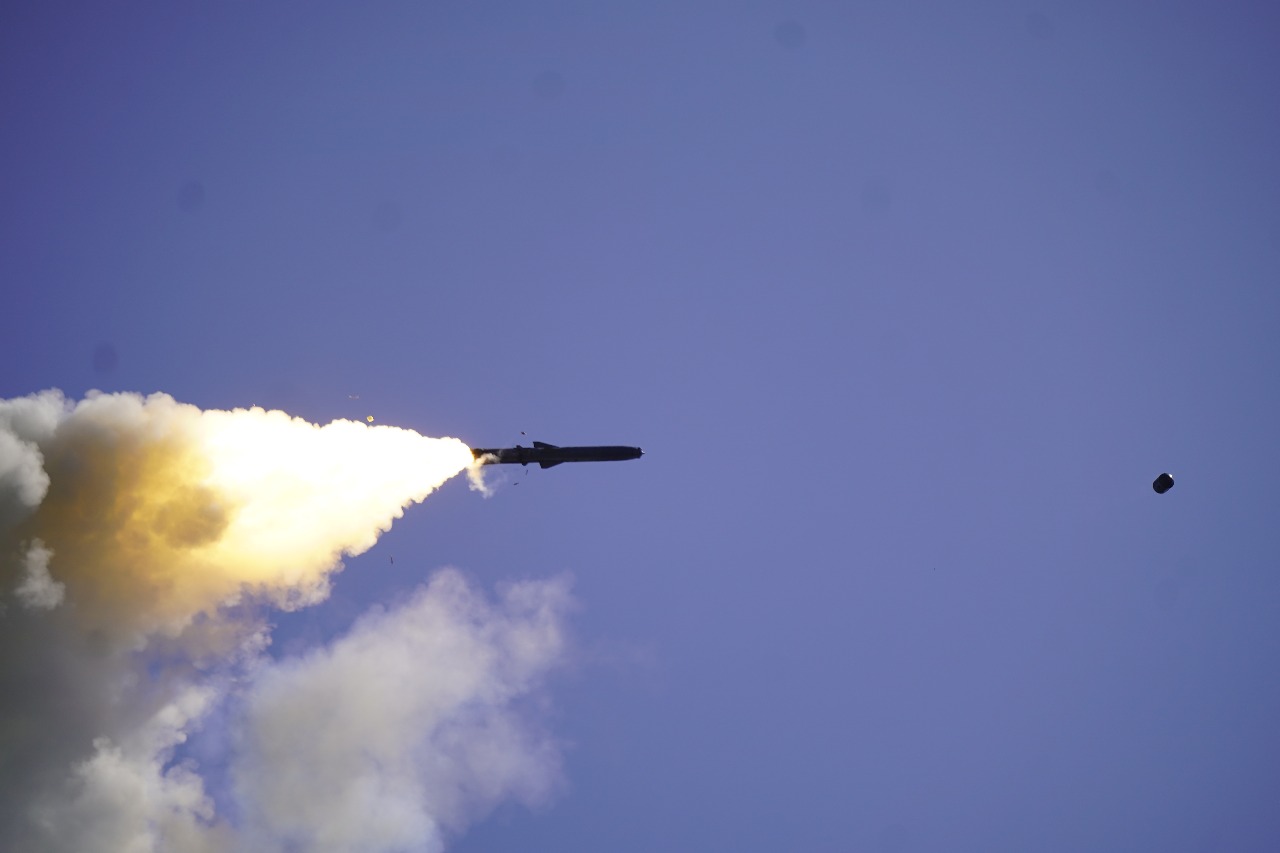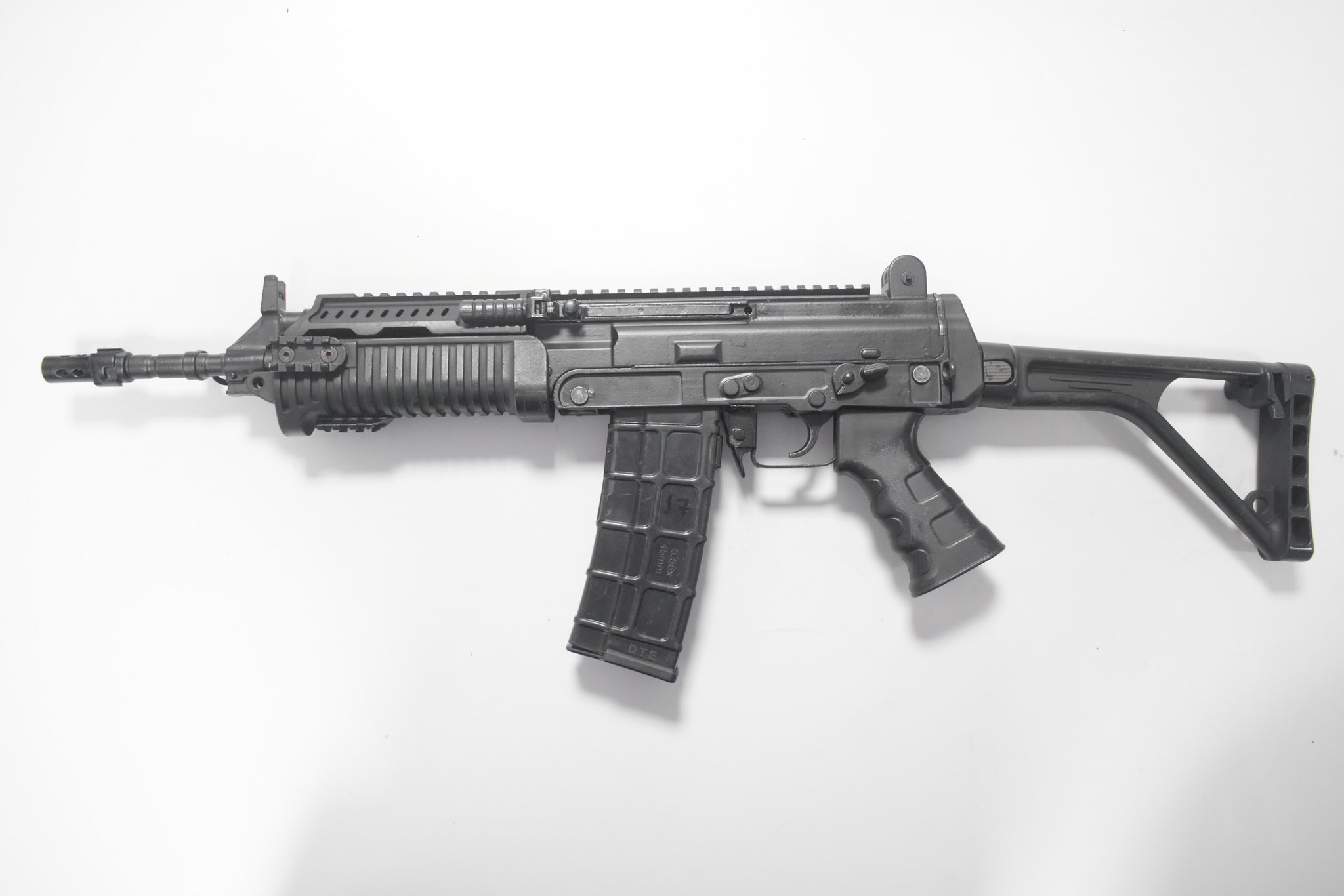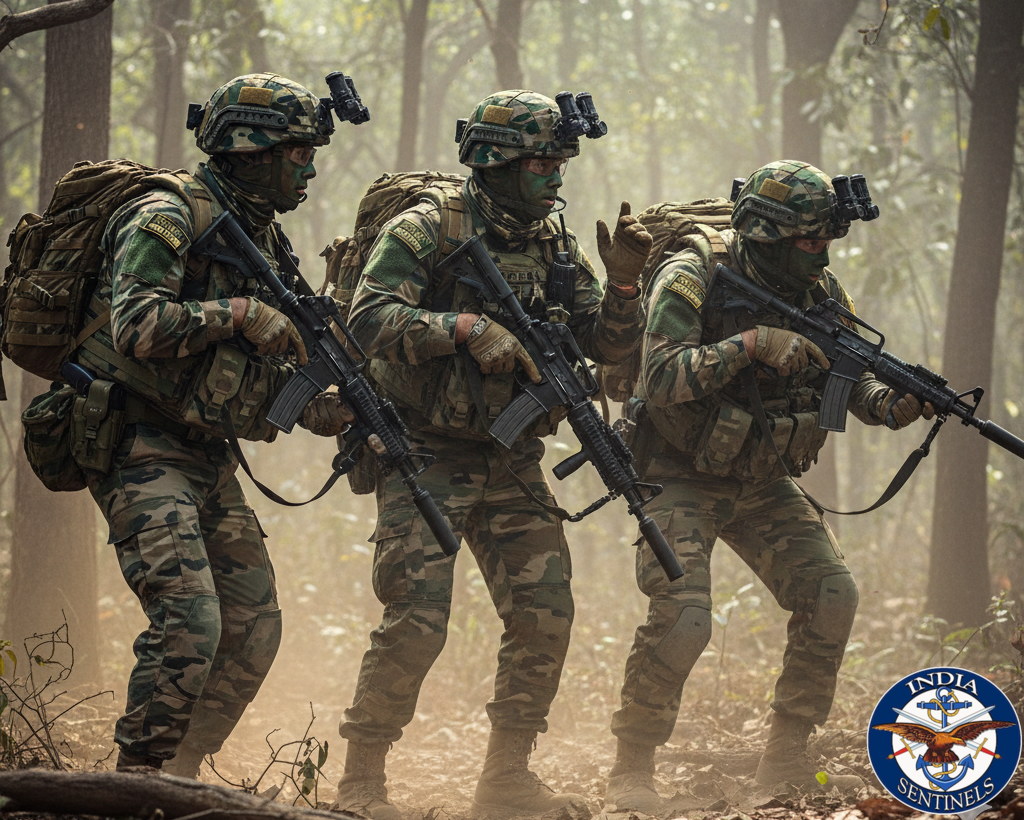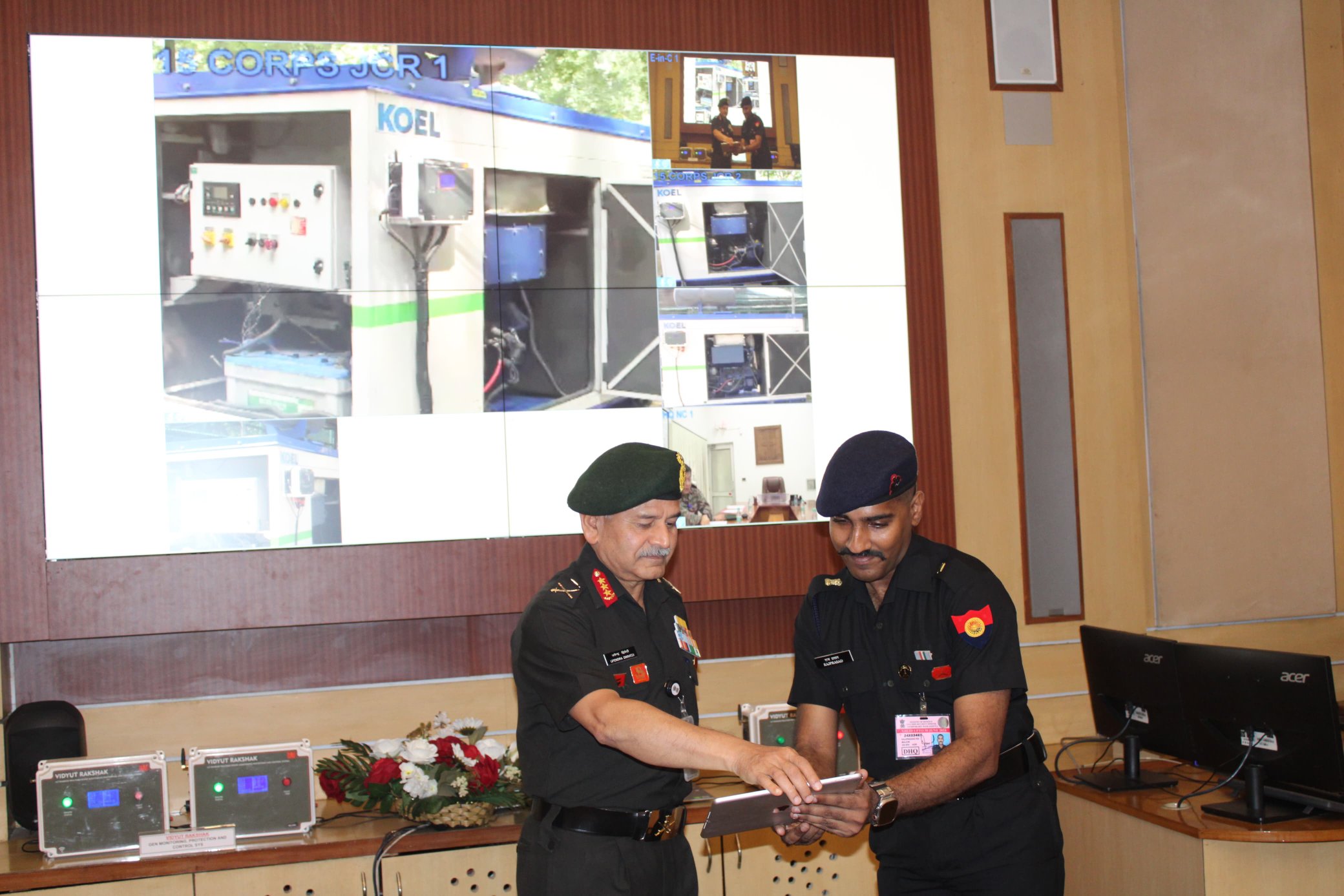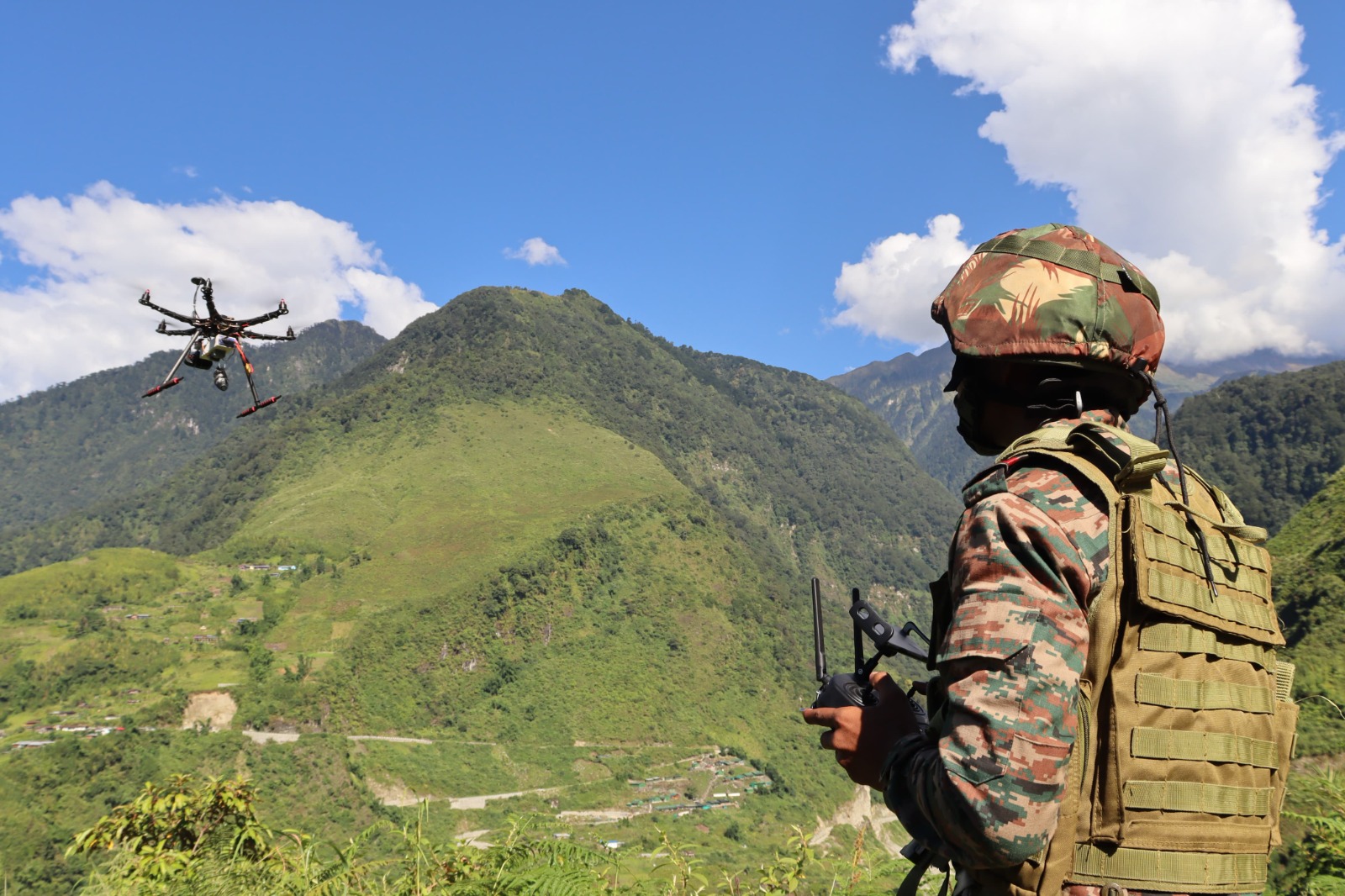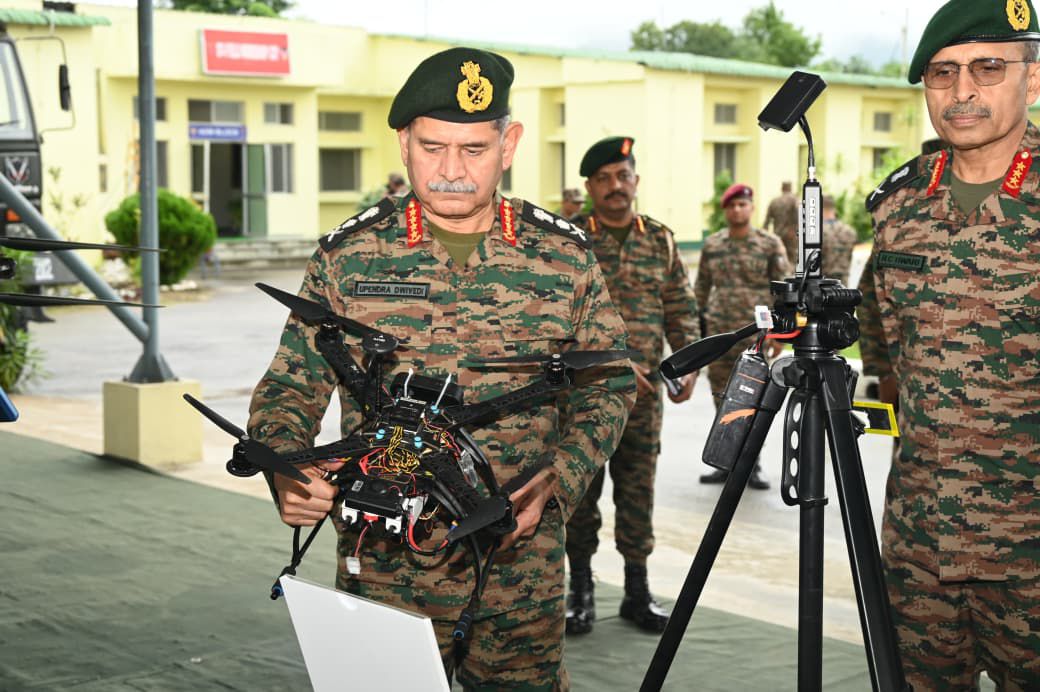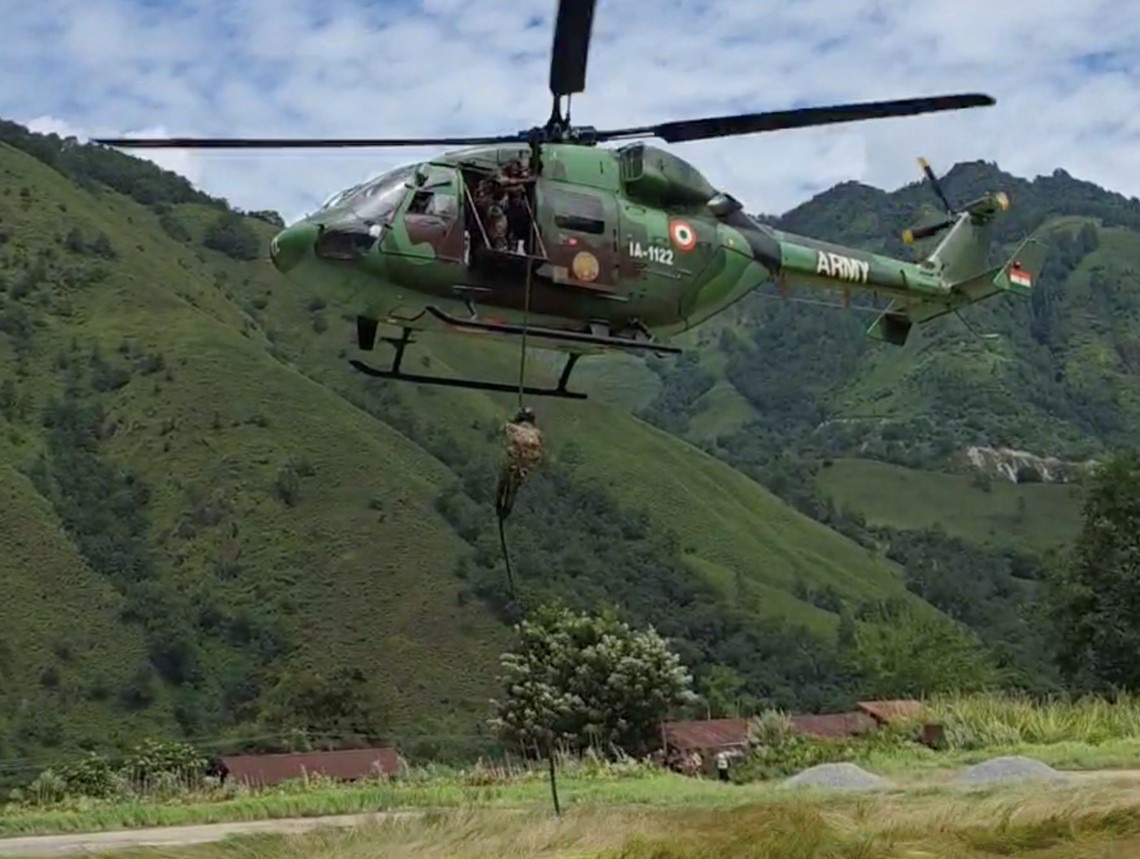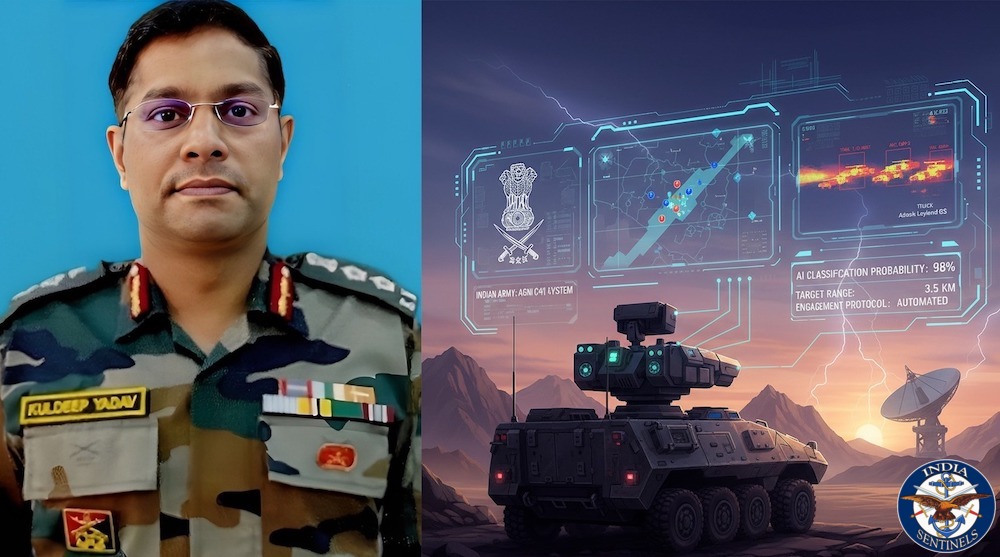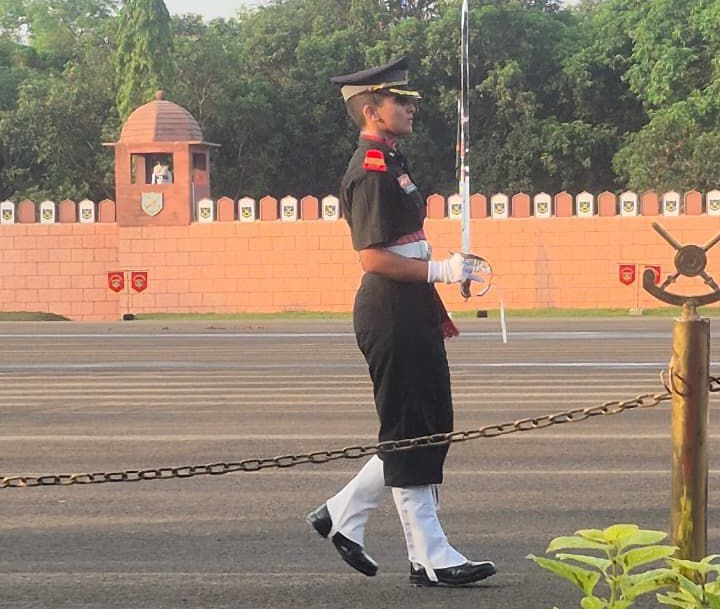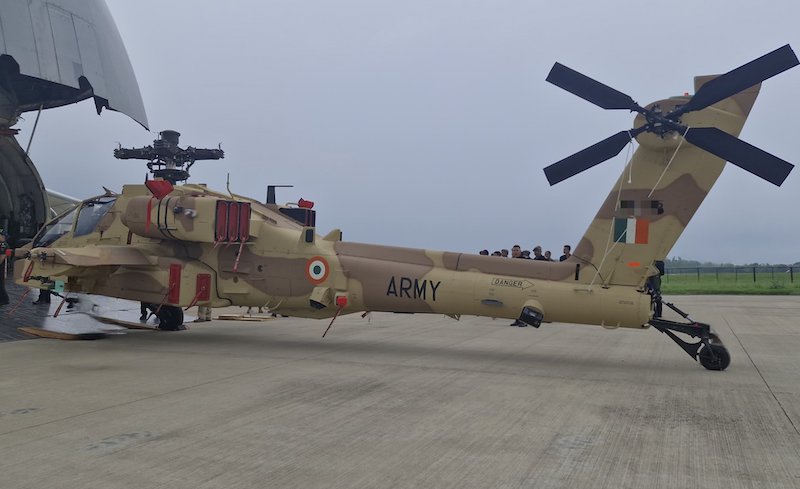 One of the three Boeing AH-64E Apache Guardians after being unloaded from an Antonov-124 aircraft. (Photo: Indian Army)
One of the three Boeing AH-64E Apache Guardians after being unloaded from an Antonov-124 aircraft. (Photo: Indian Army)
New Delhi/Hindon: In what the Indian Army termed as a “milestone moment” for the service, the first batch of Boeing AH-64E Apache Guardian attack helicopters was formally received by the force at the Hindon Indian Air Force Station in Uttar Pradesh, on Tuesday. Delivered aboard a Soviet-era Antonov-124 aircraft chartered by the United States military, the three helicopters mark a critical step in enhancing the Army's offensive capabilities, particularly along the western frontier.
The delivery follows a ₹5,691 crore contract finalized in February 2020 under the India-US defence cooperation framework. Initially scheduled for mid-2024, the transfer of six helicopters was delayed by more than a year due to technical glitches and supply chain disruptions at Boeing’s end. The remaining three aircraft are expected by November.
To operationalize this capability, the Army had raised the 451 Army Aviation Squadron in March 2024 at Nagtalao Army Station near Jodhpur in Rajasthan. The unit remained aircraft-less for over 15 months, underlining the urgency and eventual relief brought by the delivery.
#Apache for Indian Army
— ADG PI - INDIAN ARMY (@adgpi) July 22, 2025
Milestone moment for Indian Army as the first batch of Apache helicopters for Army Aviation arrive today in India.
These state-of-the-art platforms will bolster the operational capabilities of the #IndianArmy significantly.#YearofTechAbsorption… pic.twitter.com/phtlQ4SWc8
Deployment
Strategically based in Jodhpur, the Apache helicopters will be tasked with operations in the desert terrain bordering Pakistan, where heightened troop presence and recent skirmishes have called for sharper aerial strike capability. The acquisition comes on the heels of Operation Sindoor – India’s retaliatory cross-border action against Pakistan following the Pahalgam terrorist attack.
In a statement, the defence minister, Rajnath Singh, said the arrival of the Apache combat choppers is a “significant step” towards strengthening India’s defence capabilities, which underscores a shift that allows the Army to exercise direct control over close air-support assets – a role so far managed solely by the Indian Air Force.
While the Air Force continues to operate 22 Apaches acquired under a separate $3.1 billion contract concluded in 2015, the Army’s fleet marks a doctrinal transition, promoting tighter integration of air assets with ground forces.
Technology and firepower
Designed for multi-domain operations (MDO), the AH-64E Apache is the world’s most advanced multi-role combat helicopter. Powered by twin General Electric T700-GE-701D engines, the aircraft can reach speeds of 300 kilometres per hour and has an operational range of about 500 kilometres. Its combat ceiling exceeds 6,000 metres – suitable for high-altitude and desert warfare alike.
Armament includes the M230 30mm chain gun with a capacity of 1,200 rounds, 16 AGM-114 Hellfire missiles for precision anti-armour strikes, Hydra 70mm rockets for area suppression, and air-to-air Stinger missiles for aerial defence. These are complemented by a robust defensive suite featuring radar warning receivers and missile countermeasures.
Perhaps the most defining feature is the AN/APG-78 Longbow radar mounted above the main rotor. This system can scan and prioritize up to 128 targets, even while concealed behind terrain features. The integration of helmet-mounted displays, infrared imaging, and real-time data sharing via Link 16 provides pilots unmatched situational awareness and operational flexibility.
Comparative edge over indigenous platforms
Compared with the HAL Prachand and HAL Rudra – the two indigenous combat helicopters in Indian service – the Apache scores significantly higher in payload, survivability, and multi-role operability. Prachand is optimized for high-altitude warfare, while Rudra, a modified utility platform, offers lighter weaponry and modest protection. In contrast, the Apache’s battlefield networking capabilities allow for seamless manned-unmanned teaming, real-time target sharing, and coordinated operations.
Indigenous component
While the aircraft are manufactured at Boeing’s Mesa, Arizona facility, their fuselages are assembled in Hyderabad by Tata Boeing Aerospace Limited – a joint venture reflecting India's push under the “Atmanirbhar Bharat” (self-reliant India) initiative. The partnership not only enhances indigenous manufacturing but also signals strengthening Indo-US strategic ties. The recent delivery was discussed during a call between Rajnath Singh and the US defence secretary, Pete Hegseth, on July 1.
With the choppers set for induction, the Indian Army now controls its own Apache assets – a step forward in transforming battlefield responsiveness and decentralising air support in critical operational theatres.

